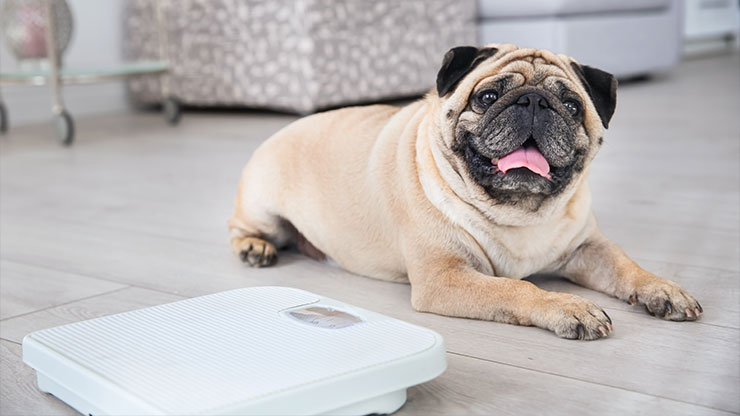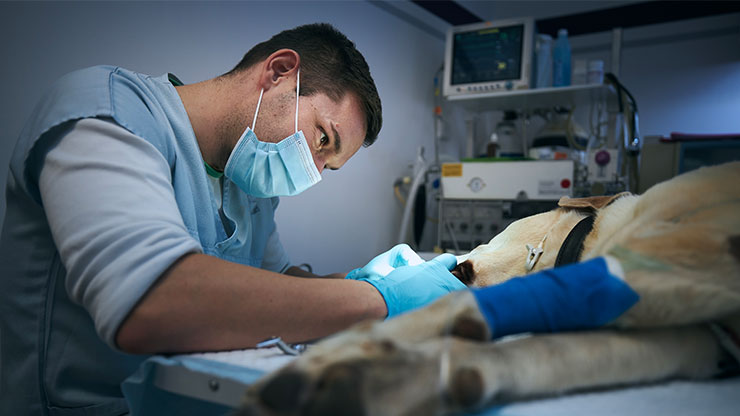
Osteoarthritis and Dogs
Dogs are beloved family members, and when they start to show signs of aging, you want to do everything you can to help them feel comfortable and happy. One of the most common health problems that affect older dogs is osteoarthritis. This can make it difficult for them to move or play around and cause a great deal of pain. If you're worried that your dog may suffer from this condition, read on to understand the five signs of osteoarthritis in dogs and treatment options.
What is Osteoarthritis?
Degenerative and inflammatory joint disease are the two most common forms of arthritis afflicting dogs. Osteoarthritis is the most prevalent sort of arthritis in canines. It is a progressive disease that results in cartilage deterioration that covers the bones’ ends in joints. This leads to inflammation, pain, and stiffness. A dog's developing osteoarthritis includes aging, obesity, metabolic diseases, and congenital joint disorders.
Osteoarthritis Symptoms:
1. Stiffness and Reduced Mobility
One of the most common signs that a dog is suffering from osteoarthritis is stiffness and reduced mobility. Dogs may seem hesitant to move around or play as they usually would, and they may appear to be in pain when they try to engage in physical activity. This is often due to the inflammation and stiffness in their joints. This may be normal for older dogs who are slowing down anyway, but if you notice a sudden or drastic change in your dog's activity level, it could be a sign of osteoarthritis, and you need to see a vet.
2. Inactivity and Sleeping More
As dogs age, they naturally become less active and sleep more. But if you notice that your dog is sleeping significantly more than usual or is no longer interested in playing or going for walks, it could be a sign of osteoarthritis. Dogs with this condition often feel too hurt to move around and may even suffer from fatigue. This fatigue can lead to inactivity, which can then worsen the symptoms of osteoarthritis.
3. Unusual Weight Gain/Muscle Loss
If your dog suddenly gains weight or loses muscle mass, it could be a sign that it cannot exercise as much as it used to. This lack of exercise can lead to further weight gain and muscle loss, creating a vicious cycle. Dogs with osteoarthritis may also have a pot-bellied appearance due to the pain and inflammation in their abdomen. If this is the case, it is essential to take them to the vet as soon as possible.
4. Appetite Loss
One of a dog's most common signs of osteoarthritis is a loss of appetite. This can be due to the pain and inflammation that dogs with this condition experience. It can also lead to weight loss, which can worsen the symptoms of osteoarthritis. Appetite loss is a severe symptom and should be taken seriously. If your dog is not eating, discussing a solution with your veterinarian is essential.
5. Unusual Urination
Unusual urination can signify many different health problems in dogs, including osteoarthritis. This may be due to the pain and inflammation that dogs with this condition experience. It can also lead to weight loss, which can worsen the symptoms of osteoarthritis.

Treatment for Osteoarthritis
There are both medical and non-medical treatments available for dogs suffering from osteoarthritis. Always discuss treatment first with your veterinarian. They may recommend a combination of these given treatments.
Non-Medical Treatments:
1. Weight Management
Maintaining a healthy weight is essential for all dogs but especially for those with arthritis. Excess weight strains already-damaged joints, which can worsen pain and inflammation.
If your dog is overweight, there are a few things you can do:
- Cut back on their food intake
- Increase their exercise
- Speak to your vet about a weight-loss plan
2. Exercise
As mentioned, exercise is crucial not only for weight loss but also for joint pain in general. Studies have shown that blood circulation can help with joint pain. Start with short, low-impact exercises and increase the intensity and duration gradually. Swimming is an excellent exercise for dogs with arthritis since it's easy on the joints.
3. Nutritional Supplements
Some nutritional supplements available can help reduce pain and inflammation in dogs with arthritis. These include
- Omega-3 fatty acids,
- Glucosamine
- Chondroitin
These supplements help with the development and repair of cartilage. They can also help to reduce inflammation.
4. Acupuncture and Massage
Although there are no controlled clinical studies on the effectiveness of acupuncture for pain relief in dogs with Osteoarthritis, many people report that it works. The same is true for massage. If you're interested in trying acupuncture or massage for your dog, talk to your vet about finding a qualified practitioner.

Medical Treatments:
1. Surgery
In some cases, surgery may be necessary to treat osteoarthritis. Surgery can be used to repair damage to joints or to replace damaged joints with artificial ones. Surgery is costly and should only be considered as a last resort.
2. NSAIDs
Non-steroidal anti-inflammatory drugs (NSAIDs) are the most frequently used treatment for osteoarthritis. NSAIDs work by reducing pain and inflammation. Commonly used NSAIDs for dogs include Aspirin and Rimadyl. Ask your vet if NSAIDs are appropriate for your dog. These drugs can have serious side effects, including gastrointestinal problems and kidney damage.
3. Glucocorticoids
Glucocorticoids are steroid medications that reduce pain and inflammation in dogs with osteoarthritis. Glucocorticoids are usually only used for a short period due to the potential for side effects. As this is a severe medication, it can only be used under the care and guidance of a veterinarian.
4. Chondroprotectors
Chondroprotectors are a type of medication that can help to slow the progression of osteoarthritis. They work by protecting cartilage and promoting its repair. Commonly used chondroprotective medicines for dogs include Adequan and Cosequin. Like with Glucocorticoids, a veterinarian's monitoring is required when using chondroprotectants.
Final Word
If you notice your dog exhibiting any signs of osteoarthritis, make an appointment with your veterinarian. They will be able to diagnose the condition and develop a treatment plan that's right for your dog. Most dogs with osteoarthritis can live happy, healthy lives with proper treatment.










